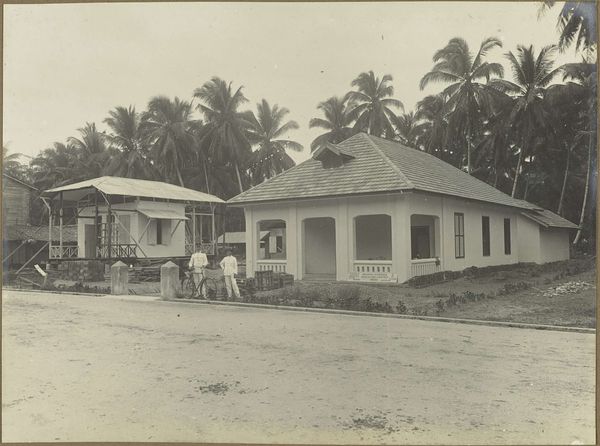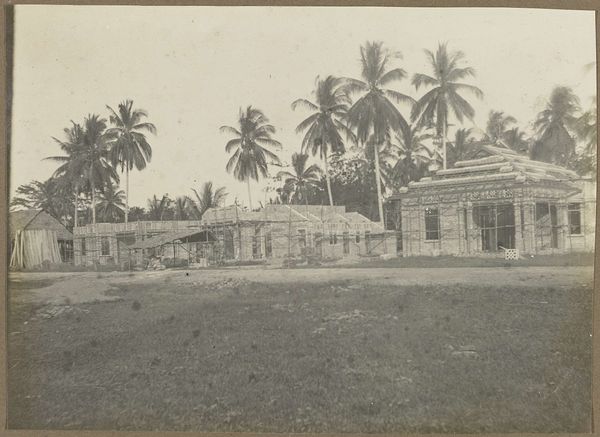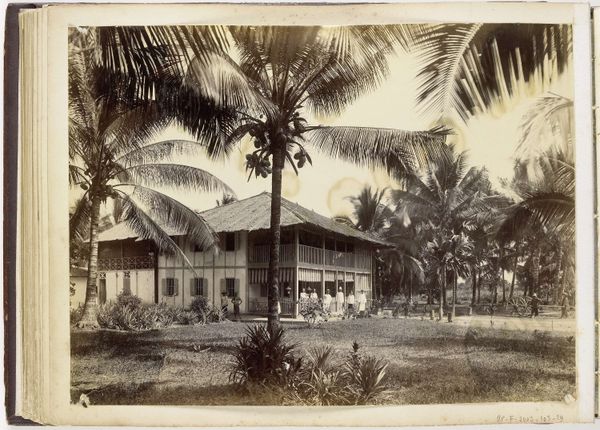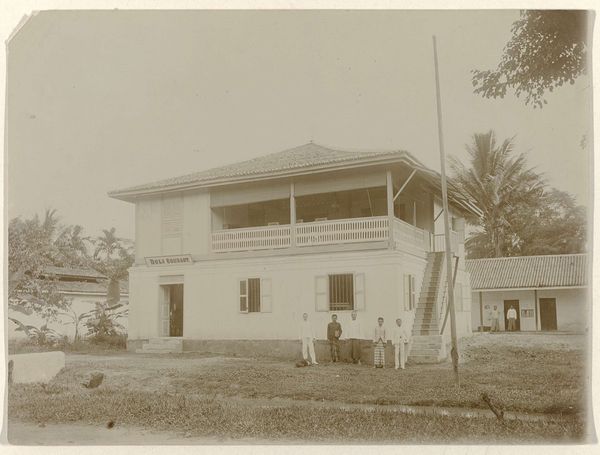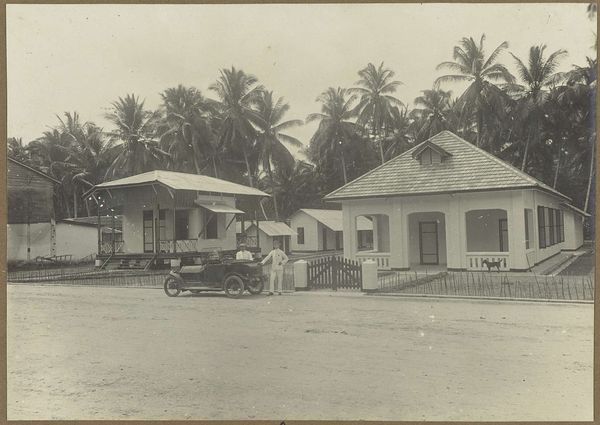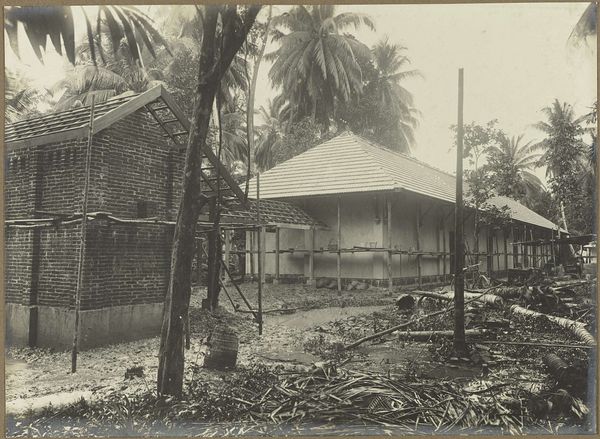
photography, architecture
#
natural tone
#
landscape
#
photography
#
architecture
Dimensions: height 117 mm, width 166 mm
Copyright: Rijks Museum: Open Domain
Editor: So this photograph, "Enkele voltooide gebouwen in een gebouwencomplex," dating between 1914 and 1919, appears to be a study of architecture within a tropical landscape. The focus is very much on the materials and construction of the buildings themselves. What stands out to you the most? Curator: For me, it's the explicit intersection of labor and architecture. The "natural tone" highlights the raw materials - the wood, the tiling, the plaster – and presents them almost unadorned. Where were these materials sourced? Who produced them? And how does their presence reflect broader social and economic structures of that time? Is this perhaps a colonial building, displaying the exploitation of resources and labour? Editor: That's interesting. I hadn't considered the labor aspect so directly. So, instead of simply seeing these buildings, we should think about their *making*, the process of sourcing and assembling all those components. How does thinking about the "making of" affect our interpretation? Curator: It encourages us to question the power dynamics embedded in the architecture. Consider, for instance, the seemingly "simple" tiled roof. Where was the clay mined? Who fired the tiles? Their standardization speaks to the advent of mass production techniques. Or what about the style? Where do the architectural details originate? All of these are physical reminders of the industrial revolution and global material flows. Editor: So, by shifting the focus to the materials and their origins, we reveal hidden stories within the image? It is kind of incredible! Curator: Precisely! The image transcends being simply a picturesque view of tropical buildings and becomes a potent indicator of globalized production and labor networks. Editor: Thank you, I am seeing a totally different image.
Comments
No comments
Be the first to comment and join the conversation on the ultimate creative platform.
